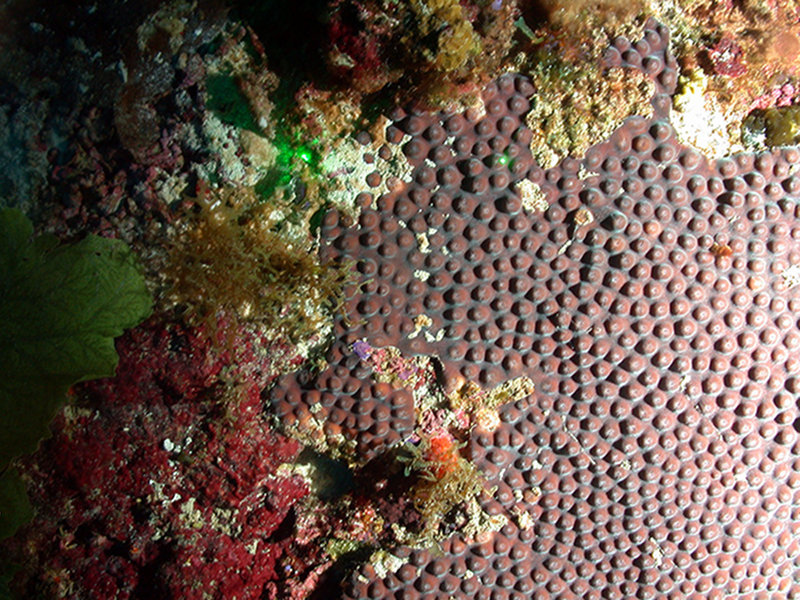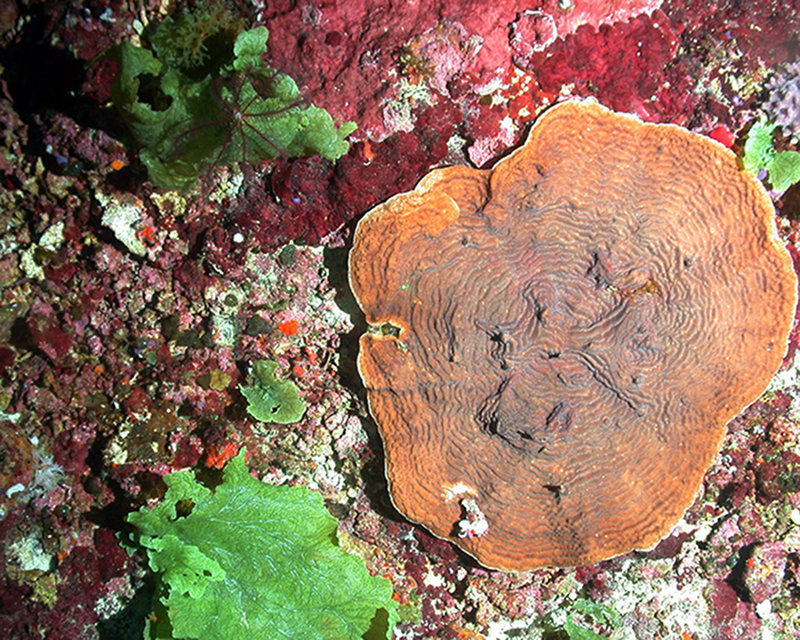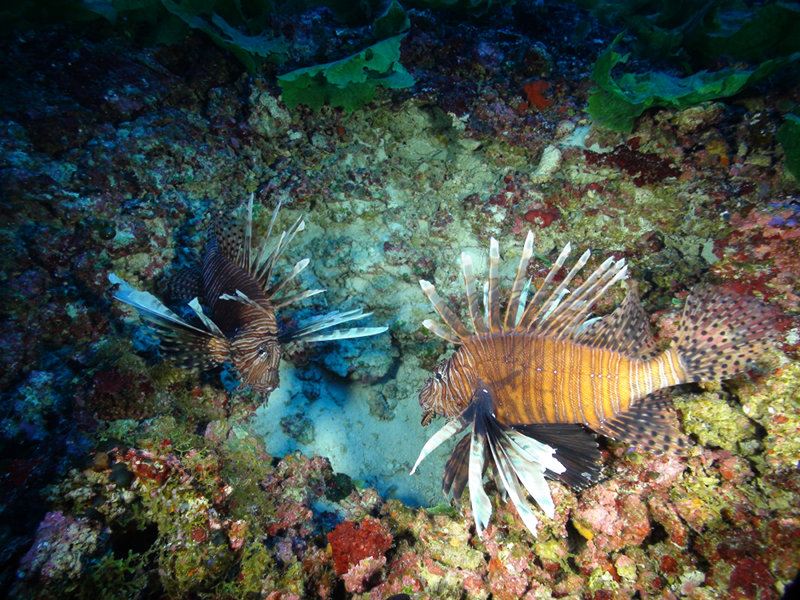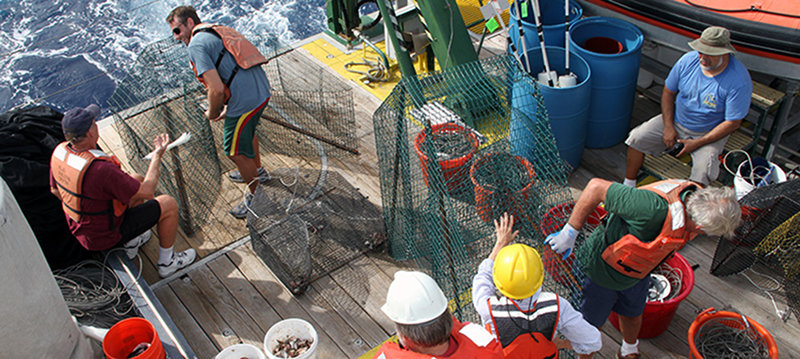
By M. Dennis Hanisak, Chief Scientist for Coral Reef Connectivity 2013 Cruise, and Research Professor - FAU Harbor Branch
September 13, 2013

Montastraea cavernosa (great star coral) is an important reef builder on many Florida and Caribbean reefs. Its distribution was documented by ROV surveys at both Pulley Ridge and the Tortugas area, and specimens collected by the tech diving team for molecular analyses. Image courtesy of M. Dennis Hanisak, FAU Harbor Branch. Download larger version (jpg, 1.3 MB).
On the Walton Smith, we:
Our Coral Ecosystem Connectivity 2013 cruise involved a team of 22 scientists and divers working on two ships, the R/V F.G. Walton Smith and the M/V Spree, to accomplish all of our mission objectives.
In all, we completed 30 ROV dives, totaling 55 hours of bottom time and 4,914 digital still images during 15 days at sea. Unlike the hard-bottom habitat of Pulley Ridge, we found the Tortugas sites to be primarily soft bottom, often with quite a lot of macroalgal cover. We did find sites with healthy patch reefs dominated by Montastraea cavernosa (great star coral), a number of soft coral species, and sponges. Our Community Structure group will be using this information to document and determine the distribution of these mesophotic habitats and hard-bottom, coral, and fish communities.

Agaricia is the most widespread genus of hard coral at Pulley Ridge. Identification to species often requires collection of specimens. Image courtesy of Dennis Hanisak, FAU Harbor Branch. Download larger version (jpg, 1.6 MB).
On the Spree, the nine science divers conducted 85 dives, totaling 22.85 hours of bottom time at depths ranging from 55 to 75 m (180 to 245 ft). To ensure that the divers had the best chance of collecting the target taxa, the scientists on the Walton Smith sent the locations of “hot spots” of target organisms to the divers on the Spree. The dive team collected specimens of targeted coral, fish, sponge, and algal species for the Population Genetics group, who will use molecular tools back in their labs to identify relationships among populations at these sites and other reefs in the Gulf of Mexico and the Florida Keys. Additionally, the divers swapped out the instrumentation at the three Physical Oceanography moorings installed last year at Pulley Ridge and in the Dry Tortugas. These data will be analyzed by the Physical Oceanography group and contribute to models being developed on the oceanographic connectivity between Pulley Ridge and the Florida Keys.

The population of the exotic lionfish continues to grow since we first observed them at Pulley Ridge in 2010. We commonly saw groups of 6-10 lionfish; in one red grouper pit, we saw more than 30 lionfish. Image courtesy of Mike Echevarria, Florida Aquarium. Download larger version (jpg, 4.8 MB).
Overall, we had a very successful cruise and were able to accomplish all of our objectives. Plus, this research cruise has gotten us closer towards our ultimate goal – defining what role the reefs of Pulley Ridge may play in replenishment of key fish species, corals, and other organisms in the downstream reefs of the Dry Tortugas and Florida Keys. Our intent is to create a comprehensive understanding of Pulley Ridge to facilitate resource planning in the eastern Gulf of Mexico and allow resource managers to develop more effective strategies to protect these and other reefs.

Setting the fish traps from the stern of the R/V Walton Smith at the end of each day was a team effort. These collections were quite successful with 62 specimens of the primary target species, red grouper (Epinephelus morio), being sampled, tagged, and returned to the sea. Image courtesy of Brian Cousin, FAU Harbor Branch. Download larger version (jpg, 7.6 MB).
Our first two cruises have added a considerable amount of new information to what was previously known. Now we all have a lot of analyses to do during the coming year before we return to these sites again in 2014!